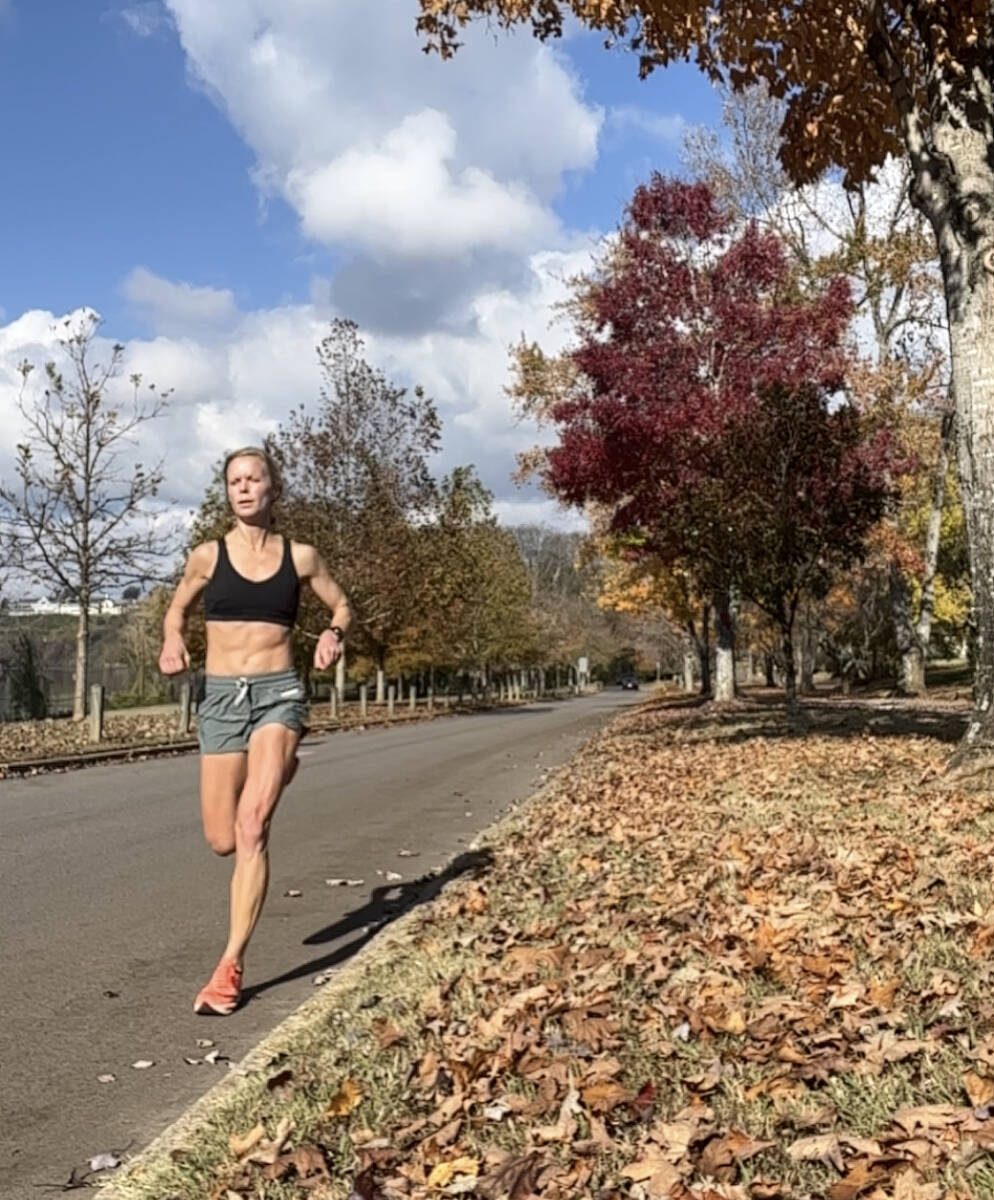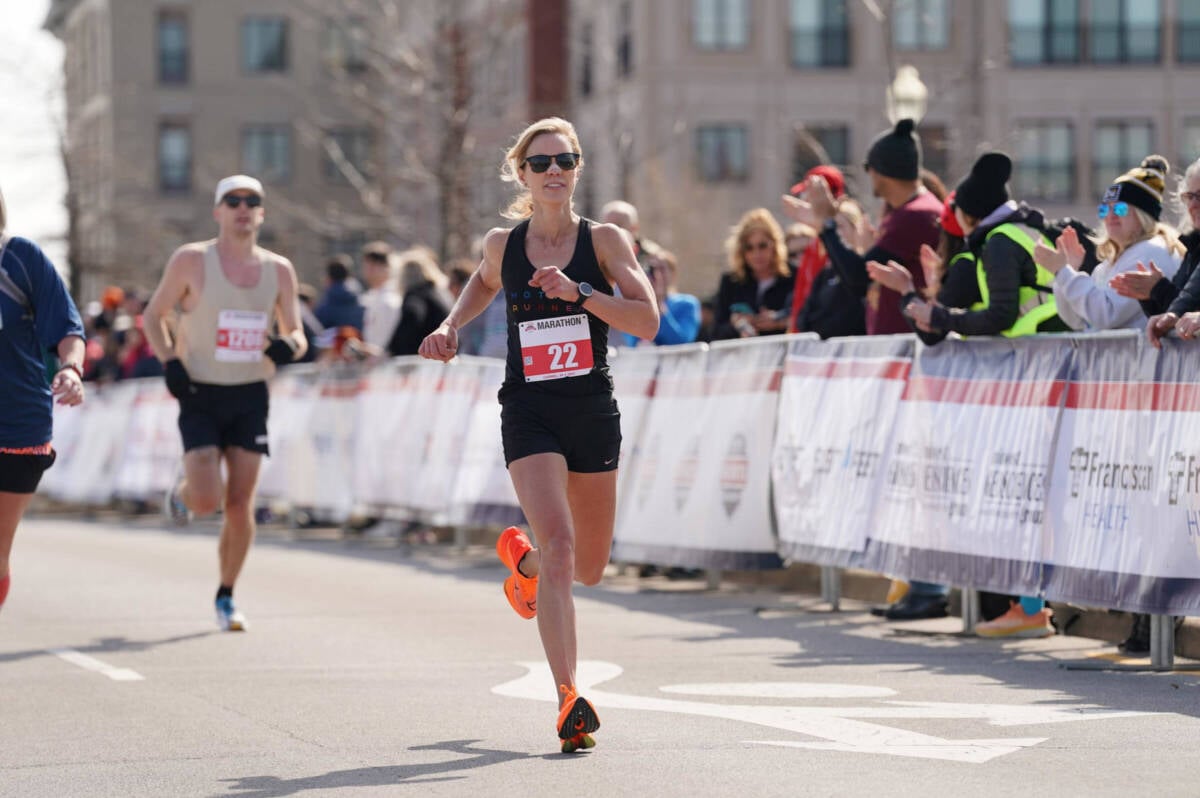10 Expert Tips for Running with Asthma
I am writing this article in hopes of trying to help runners like some of my athletes, and my husband, who are running with asthma.

After getting mono in 2020 right at the start of the pandemic (so maybe COVID, too), my husband began suffering from exercise-induced asthma. Unfortunately, the rescue inhaler he uses to prevent asthma attacks on the run makes him feel nauseous and his heart race. Many asthma sufferers I’ve talked to, including a couple of the runners I coach, have similar problems.
So, I wanted to find out how runners can keep on running with asthma with having to make huge trade-offs. I got with Dr. David Wang at the Hospital for Special Surgery in New York, and with other runners, on tips on how to run with asthma, including running with exercise-induced asthma. (Please note, I am not a doctor but I did work with a doctor to write this article. See your doctor for your asthma treatment plan!)
Let’s go!
Table of contents
- 10 Tips for Running with Asthma
- FAQs About Running with Asthma
- What does asthma feel like?
- What is exercise-induced asthma?
- How can you tell if it’s exercise-induced asthma or just out of shape?
- Can you treat exercise-induced asthma without medication?
- What can people with Exercise-Induced Asthma from a respiratory infection do to keep running?
- How can I reduce side effects of my inhaler?
10 Tips for Running with Asthma
Here are tips to help you with your running with asthma to keep you safe and healthy.
Get your asthma under control.
See an allergist if you are regularly suffering from difficulty breathing while running, or not. Ensure your asthma is under good control at baseline before starting or increasing your running.
Some asthma treatments may include:
- A short-acting rescue inhaler (or bronchodilator) that contains albuterol, levalbuterol, Metaproterenol, or , Pirbuterol.You may run with this in case of an attack or pre-treat on days you know you may have an attack.
- A long-acting inhaler (inhaled corticosteroids or beta antagonists) used to control asthma symptoms, not provide instant relief. Tehse are typically taken twice a day and used in conjunction with a rescue inhaler.
- Medications like Singulair which are tablets taken daily that block immune symptoms that cause asthma.
Develop an action plan.
Be prepared should you have an attack. Know when to act and how you will act. This involves running with your inhaler, how you will get home, who you may call, etc.
Take an inhaler before you run.
If you know your asthma might be triggered on your run (by pollen in the air, for example), use your short-acting inhaler about 5-20 minutes before your run. If you tend to get an upset stomach, eat some graham crackers or something light with the inhaler.
Warm-up before you go outside.
Before you go for your run, do a moderate warm-up inside. This could be doing plyometrics, or hopping in a stationary bike or treadmill. Do think for about 15 minutes. This can help prevent symptoms in asthma sufferers by inducing what is called a “refractory period” with less bronchoconstriction, says Dr. Wang.
Always have a rescue inhaler.
When you go for your run, be sure you have your rescue inhaler with you just in case you have an attack. Consider running with your phone too in case you need to call for help. This should all be part of your asthma action plan.
Run with company.
In addition to running with a phone, consider running with a friend that can act fast should you need help. Make sure your friend knows your action plan and what to do should you start to feel your asthma symptoms coming on.
Avoid triggers.
Avoid known triggers like cold/dry air, pollutants or allergens (like grass, pollen and even perfumes or ammonia-based triggers). If you suffer from asthma and it’s spring, don’t run through a grassy field, for example. Don’t run behind cars and breathe in their exhaust. Avoid running outside on low-air quality days. Have a treadmill back-up plan, if possible. Also, don’t run if you are suffering from or still recovering from a respiratory infection.
Run in the morning.
If you run early in the morning or right after it rains, you’ll be exposed may be exposed to less pollen and asthma triggers. However, if you’re allergic to grass, dust, mold, and weeds, rain may worsen your asthma symptoms. Knowing your triggers should be part of your action plan. Talk to your doctor about what time is best for you to run.
Take breaks.
You may need to modify your running by going slower or taking walk breaks. That’s okay while you’re working to manage your asthma symptoms. Modifying your running with asthma is not unlike modifying it for illness or injury. It’s part of the process to keeping you fit, healthy, and on a path forward.
Cover your mouth.
If you’re running outside and the air is cold and dry, or you know you’ll be exposed to triggers, consider covering your mouth with a scarf or buff. This will allow your nose to moisture cold, dry air that can make you cough. It will also reduce the amount of allergens or pollutants you may breathe in. A Breathe Right strip may also help you exercise-induced asthma sufferers breathe.
FAQs About Running with Asthma
What does asthma feel like?
An asthma attack can come on gradually or suddenly. An asthma attack: starts with coughing and your chest may feel tight or like something is sitting on it. It may feel like you’re trying to breathe through a straw, and you can’t get enough air. You may start to wheeze and feel lightheaded. An asthma attack can be life-threatening.
What is exercise-induced asthma?
Exercise-induced asthma or exercise-induced bronchoconstriction (EIB) is when asthma symptoms begin with exercise. People without asthma can have EIB.
Exercise-induced asthma symptoms include:
- Coughing and wheezing (about 5 to 20 minutes into exercise and peaking after exercise)
- Chest tightness
- Shortness of breath
- Getting winded easily
- Poor athletic performance
- Fatigue during exercise
People with exercise-induced asthma usually start having symptoms after five to ten minutes of running. The symptoms them peak five to ten minutes after running, and resolve within an hour. You can develop exercise-induced asthma suddenly. Indeed, many people have gotten exercise-induced asthma after getting COVID. My husband got EIB after suffering from mono.
Exercise-induced asthma usually starts about ten minutes into exercise and can last for more than an hour. Exercise-induced asthma symptoms usually stop about a half hour after you’ve stopped exercising. EIB triggered by a respiratory infection, like COVID, may go away on its own after your immune system has calmed.
How can you tell if it’s exercise-induced asthma or just out of shape?
Suffering from exercise-induced asthma may feel like you’re out of shape because you’re winded and fatigued. A big difference between EIB and being out of shape is that you cough with exercise-induced asthma, and symptoms often peak after you exercise. People who are out of shape feel better when they stop exercising.
Can you treat exercise-induced asthma without medication?
There are ways to manage exercise-induced asthma that don’t involve medication. These ways include:
- Do a warm-up of about 15 minutes about 15 minutes before heading out
- Cover your nose and mouth when running in cold weather
- Avoid allergens like pollen or car pollution
- Try to breathe in through our nose to warm air before it goes into your lungs
- Use a Breathe Right strip to open up your airways
- If this doesn’t help, see an allergist about medications
Can running make asthma better?
It can be hard to run with asthma but if you’re able to manage your asthma symptoms, running can improve your asthma symptoms, says Dr. Wang.
“Exercise is important for everyone to improve many aspects of our health, and runners with asthma are no different,” he explains. “Running can strengthen the lungs and improve lung capacity, and it may reduce airway inflammation.”
Indeed, studies show that running can improve asthma control and lung function.
What can people with Exercise-Induced Asthma from a respiratory infection do to keep running?
Asthma symptoms may be aggravated after a respiratory infection. A lot of people have been prescribed a rescue inhaler to use before running after getting COVID.
If you already have asthma symptoms and get sick with a respiratory infection like COVID, a cold, or the flu, then avoid exercise while you are sick, advises Dr. Wang.
Talk to your doctor about when you can safely return to exercise. If you are going to run, be sure you:
- Run with your rescue inhaler
- Avoid any other known triggers
- Consider using a short-acting inhaler medication for exercise-induced asthma 5-20 minutes before you run
How can I reduce side effects of my inhaler?
Using a rescue inhaler, or an albuterol inhaler, can cause side effects like tachycardia (racing heart), headache, shakiness, throat or nasal irritation, and muscle aches. My husband gets nauseous using it so often he decides not to use it–and then starts wheezing when running. Not an ideal situation.
You can reduce side effects from a rescue inhaler by doing fewer puffs and also eating a little something with it.
Remember, if you are using a rescue inhaler regularly, or every time you run, then you need to talk with an allergist. Using a
This is usually taken 5-20 minutes before exercise. If they require this daily, they should discuss with their doctor if other longer-acting medications should be added. For some people, a general moderate warm-up 15-30 minutes before running may lead to a refractory period and help prevent or decrease symptoms for a few hours afterward.
You should see a doctor, specifically an allergist, if you are using your short-acting bronchodilators, whether it’s a rescue inhaler, in tablets, or liquid, more than twice a week. This is a sign of uncontrolled asthma that needs better treatment.
I hope this article helps you run with asthma. I know I learned something to help my husband get his asthma under control.







Wow! Thank you. I have exercise induced asthma and this was eye opening. There was a lot that you covered. Thank you for the helpful tips!
Thanks so much for reading it, Katie! I am glad it was helpful!